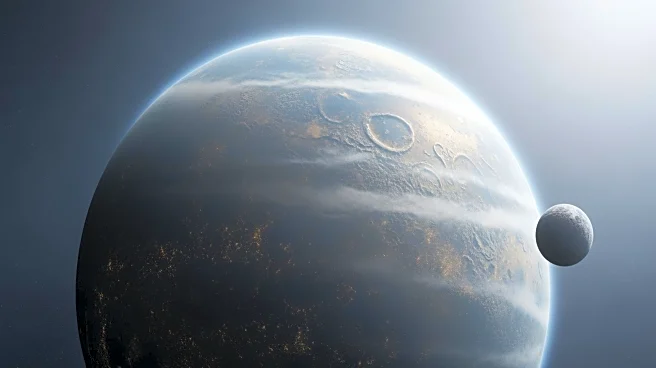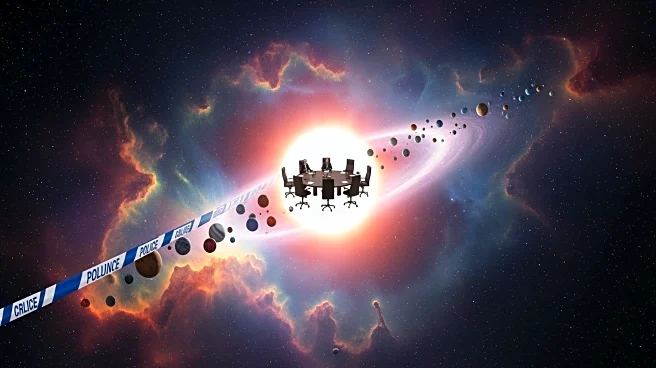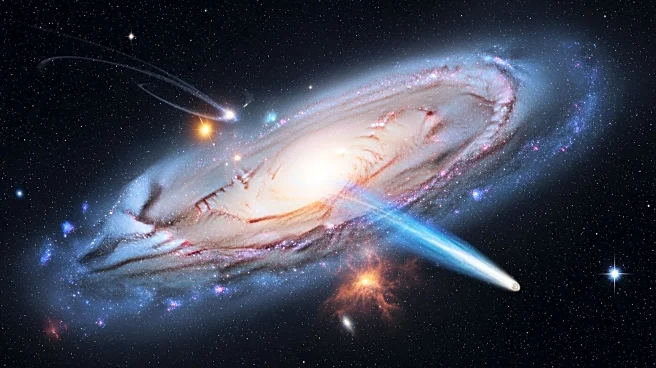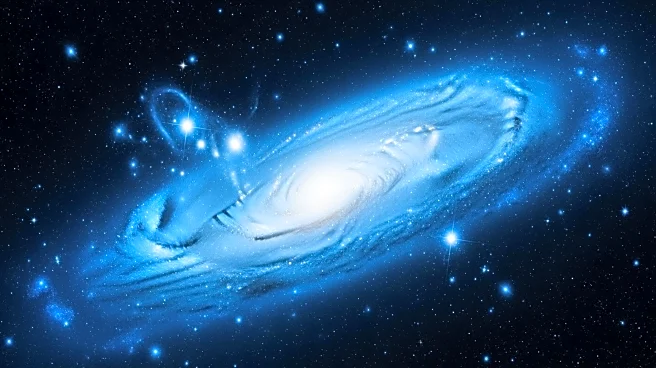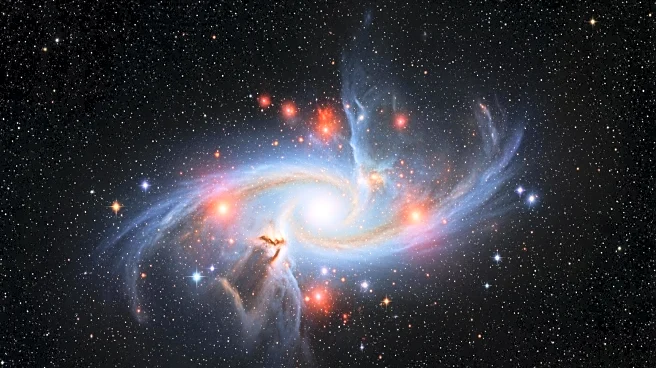What's Happening?
A recent study led by Professor Eliza Kempton from the University of Chicago has revealed that many 'mini-Neptunes,' previously thought to be covered in oceans of molten magma, may actually have solid
surfaces. These planets, which are smaller than Neptune and abundant in the galaxy, have thick atmospheres composed mainly of hydrogen, helium, and possibly water. The study, published in The Astrophysical Journal Letters, suggests that the immense pressure from these heavy atmospheres compresses the surface into a solid state. This finding challenges the earlier assumption that these planets are entirely molten and provides new insights into their composition and structure.
Why It's Important?
The discovery that many mini-Neptunes may have solid surfaces rather than being entirely molten has significant implications for our understanding of planetary formation and characteristics. These planets are among the most common in the universe, yet they have no direct analog in our solar system. Understanding their true nature helps refine models of planet formation and evolution, which is crucial for identifying potentially habitable planets. The study also highlights the complexity of exoplanetary atmospheres and surfaces, suggesting that previous models may need revision to account for these new findings.
What's Next?
Future research will likely focus on further analyzing the atmospheres and surfaces of mini-Neptunes to confirm these findings and explore their implications. Scientists may use advanced telescopes and simulation models to study other exoplanets with similar characteristics. This research could lead to a better understanding of the diversity of planetary systems and guide the search for habitable worlds beyond our solar system.
Beyond the Headlines
The study underscores the importance of re-evaluating existing paradigms in planetary science. It challenges the notion that all mini-Neptunes are molten, suggesting a need to consider atmospheric pressure and composition in planetary models. This could lead to a broader understanding of how planets form and evolve, potentially influencing the search for life in the universe.
